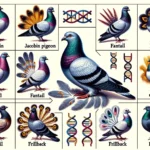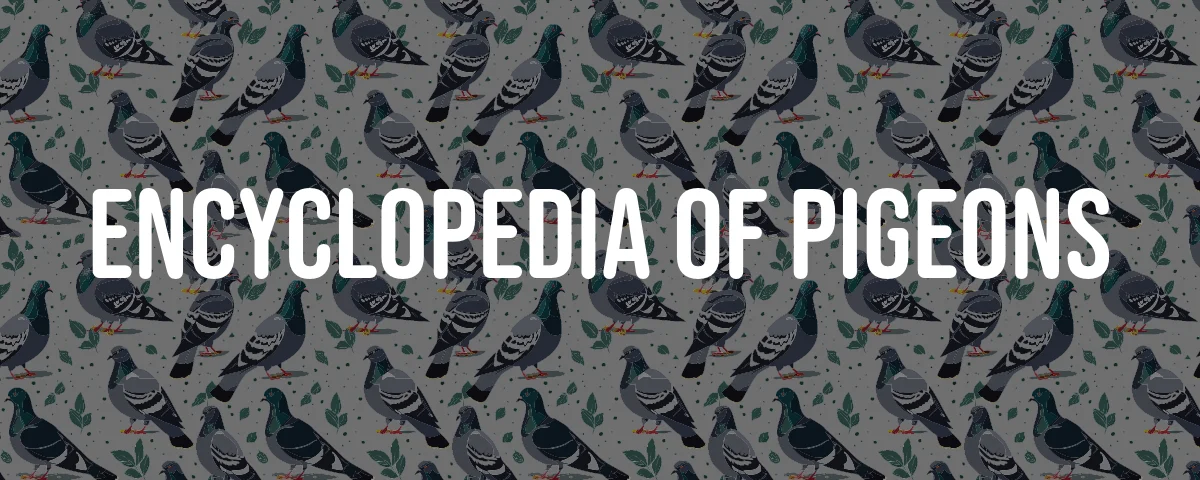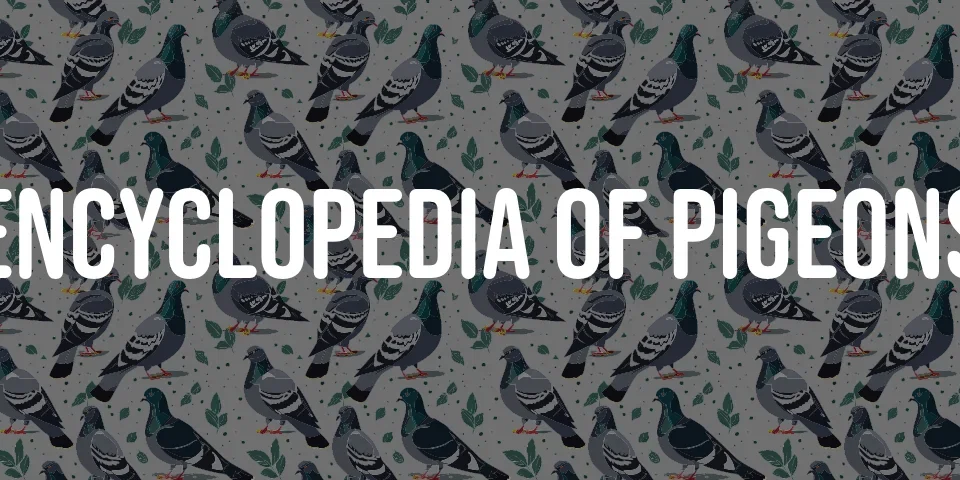Introduction to French Pouter
If you’ve ever found yourself mesmerized by a bird that seems part showman, part sculpture, you’ve likely stumbled upon the French Pouter. Picture a pigeon that defies all modesty, puffing up its chest like a Victorian dandy at a masquerade ball. Belonging to the grandiose Pouter and Cropper tribe, this breed isn’t just another face in the flock. It’s a spectacle, a living ornament. With a round, compact frame and those “don’t-miss-me” eyes, the French Pouter is less companion animal, more feathered artwork. Fanciers don’t just keep them; they collect them, like rare vinyls or vintage hats, drawn in by that blend of poise and pageantry.
What is a French Pouter?
Let’s set the stage: the French Pouter is not your everyday backyard pigeon. It stands tall, almost as if preparing to recite poetry, sporting a ballooned crop that would make any opera singer jealous. Its stature is both statuesque and strangely theatrical, a combination that seems to say, “Look at me, I dare you not to!” The head—bigger than you’d expect—and eyes that could pierce through fog give it a presence you can’t ignore. It’s no wonder breeders get hooked; every bird channels a bit of drama and a lot of charm, making the French Pouter a breed with a fan club rather than just followers.
History and Origin
Rewind to 19th-century France, where this beauty was first known as the ‘Boulant d’Amiens’. The French Pouter didn’t just happen by chance—it’s the result of a breeder’s careful matchmaking, a feathered fairytale written in the show halls of northern France and Germany. While it never quite reached the pigeon equivalent of Beatlemania, its standing among connoisseurs never faltered. This breed is like that cult-classic film—maybe not a household name, but those who know it, cherish it. Exhibitions became its stage, and its legacy is woven into the tapestry of avicultural history, particularly in the hands of those who appreciate a touch of extravagance.
Classification and Subclasses
Within the French Pouter family, diversity is the name of the game. Like a fashion house with seasonal collections, subclasses parade their own feather patterns, sizes, and unexpected splashes of color. Some sport subtle pinstripes, others turn heads in bold hues or soft pastels.
- subtle pinstripes,
- bold hues,
- soft pastels.
This variety goes deeper than just appearances; it’s the heartbeat of the breed, keeping breeders coming back for “just one more.” Each subclass is its own story, a riff on the original theme, adhering to the French Pouter’s standards but with enough flair to keep things interesting—think of them as cousins at a reunion, each with a signature style.
Physical Characteristics of French Pouter
Imagine a bird that’s part bodybuilder, part runway model. The French Pouter brings brawn and beauty, with a round, robust body and a chest that practically shouts for attention. The crop—think of it as the pigeon’s party trick—can balloon out to improbable sizes. The neck is short and sturdy, supporting a head that’s small but mighty. And those legs, stripped of feathers, almost gleam with a certain minimalist elegance.
Its stance is a geometry lesson: most of the body juts confidently forward, with a smaller portion trailing behind—like a well-balanced seesaw frozen in time. And then there’s the color palette: not content with just black or white, the breed comes dressed in every shade from sky blue to sunset red, plus intricate patterns that would put a Persian rug to shame.
Extravagant Physique and Unique Postures
If birds had red carpets, the French Pouter would take a bow every time. It’s the kind of bird that seems to know it’s being watched and puts on a show accordingly. Crop inflated, posture rigid yet somehow graceful, it’s both a display of strength and a silent ballet. Enthusiasts love watching these birds strike poses—sometimes regal, sometimes almost comically upright. The breed isn’t just pretty; it’s a performer, and the exhibition ring is its stage.
Prominent Features: High Erected Position and Slender Waistline
There’s something almost aristocratic about the French Pouter’s posture. Tall, chest out, waist cinched as if it’s headed to a Parisian ball. This stance doesn’t just impress judges—it lingers in the mind, reminiscent of a fashion model caught mid-stride. And that slender waist? It’s the kind of detail that only reveals itself on a second glance, but once you see it, you can’t unsee it. This isn’t just a pigeon; it’s avian haute couture.
Color Variations
French Pouters come dressed for every occasion—some in the crisp white of a summer suit, others in the midnight black of a tuxedo, with blues, reds, and yellows thrown in for good measure. But it’s not just the colors. Look closer and you’ll see patterns—mottling that looks like splattered paint, lacing reminiscent of antique doilies.
- crisp white,
- midnight black,
- various blues, reds, and yellows,
- mottling and lacing patterns.
It’s as if nature herself couldn’t decide on a single design and left the canvas unfinished, perfectly imperfect.
Breeding and Standards
Breeding these birds is not for the faint of heart. It’s like trying to sculpt the perfect statue out of marble—one wrong chip and the vision is lost. Breeders have learned, sometimes the hard way, that mixing things up (crossbreeding, that is) actually leads to stronger, showier offspring. But don’t expect a flock of eggs—these birds are slow and deliberate, sometimes producing not even a handful of eggs in a year. Hens mature late, and every chick feels like a small victory in an ongoing experiment in aesthetics and patience.
Breeding Practices and Standards
To get a French Pouter worthy of the spotlight, breeders play matchmaker with a sharp eye for detail. They seek birds that pose with the poise of a ballerina, feathers that shimmer like silk, and health robust enough to withstand the demands of performance.
- elegant posture,
- shimmering feathers,
- robust health.
The process is part science, part art—too much focus on one trait and you risk losing another. It’s a careful dance, generation after generation, with the goal always the same: a pigeon that looks like it stepped out of a painting, ready for its close-up.
French Standard and Exhibition Requirements
If you think getting into an exclusive club is tough, try meeting the French Pouter’s exhibition standards. Everything counts—size, symmetry, the way the crop balloons just so, the pristine quality of every feather. Colors must pop, patterns need to be crisp, and the overall impression should be nothing short of dazzling. Judges don’t just look—they scrutinize, searching for that elusive combination of tradition and showmanship. It’s a celebration of breeding as much as it is a competition, with each bird strutting its stuff for more than just ribbons.
French Pouter’s Role and Uses
In the world of pigeon fanciers, the French Pouter is a bit like a rare record—collected, admired, occasionally shown off to the right crowd. Its main gig? Exhibition. With that inflated crop and swan-like stance, it’s a natural showstopper, earning its keep in the competition ring. But it’s more than just a pretty face. Each bird carries the weight of centuries of breeding, a living testament to tradition and artistry, especially cherished in Europe where the breed’s history is interwoven with the rise of aviculture itself.
Breeders pour hours into perfecting posture, plumage, and presence, knowing that each bird is a tiny ambassador for its kind. Away from the spotlights, these pigeons remind us of the quiet pride and dedication that define the best of the avicultural world.
Utility and Exhibition Purposes
Let’s be honest: no one’s keeping French Pouters for pie. Their true worth is in spectacle. At shows, judges and spectators alike are drawn to their over-the-top crop, upright posture, and sometimes outrageous feathers.
- conversation starters,
- educational examples of selective breeding,
- ambassadors of pigeon diversity.
They’re showpieces and teachers all in one, sparking curiosity and maybe a little envy among onlookers.
Popular Varieties: Pigeon Boulant Français
Among the various incarnations of the French Pouter, the “Pigeon Boulant Français” is something of a legend. Some swear you can spot its rolling strut from across a hall. It’s the type of bird that can turn a regular exhibition into an event and has inspired more than a few breeders to dive deeper into the rabbit hole of fancy pigeon keeping. In the world of aviculture, it’s a celebrity—rare, remarkable, and just a little bit mysterious.
Care and Maintenance
Caring for a French Pouter is a bit like tending a bonsai—attention to detail is everything. The birds demand a clean, airy loft, where they can parade without bumping into each other. Forget stale water or boring grains; they need fresh hydration and a varied menu. Throw in the occasional veggie treat and you’ll have a happy, healthy showbird. And don’t skimp on the grooming—if you want to win prizes, you’ll be gently fluffing feathers and checking every inch for signs of trouble. These pigeons are social, too—ignore them at your peril, or they’ll sulk like neglected actors.
Dietary Needs: Standard Poultry Feed
You might think a bird this regal would require caviar, but in truth, standard poultry feed does the trick—if it’s high quality and fresh. Add in key proteins, vitamins, and minerals, and you’ve got a formula for glossy feathers and an impressive crop. Water, of course, is non-negotiable. The right diet doesn’t just keep them alive; it keeps them show-ready. Miss a step, and their signature silhouette might start slipping.
Shelter Requirements: Secure Coop
Think fortress, not shack. French Pouters need a coop that’s part palace, part stronghold. The threats are real—weather, predators, even the occasional jealous rival. Good ventilation is a must, unless you want a flock of wheezers.
- ample space to strut,
- sturdy perches,
- safe nooks for preening,
- impeccable cleanliness.
The right coop doesn’t just keep them safe; it lets their personalities and plumage shine.
Temperament and Social Behavior
Despite their dramatic looks, French Pouters are remarkably chill. They mingle well, rarely start a fuss, and generally keep the peace, whether in a crowded loft or an exhibition hall. Beginners and pros alike find them easy to handle—think of them as the diplomats of the pigeon world, smoothing ruffled feathers with a calm demeanor. In a world of showmanship, sometimes it’s their gentle nature that wins the most hearts.
French Pouter in Aviculture
No surprise, then, that the French Pouter is something of a national treasure in its homeland. More than a bird, it’s a symbol—a nod to the old masters of selective breeding, to centuries of patience and artistry. At shows, they’re the main event, drawing crowds and kindling fierce pride among breeders. But beyond competition, they’re ambassadors, teaching a new generation what it means to care, to curate, to create living beauty.
National exhibitions are more than just contests; they’re celebrations, places where tradition and innovation meet. The French Pouter stands as proof that aviculture is as much about history as it is about feathers. Every bird is a living link to the past, a challenge to future breeders to keep reaching for perfection.
Popularity in France and National Shows
Stroll through a French pigeon show and you’ll hear the whispers—admiration, envy, maybe even a hint of rivalry. The French Pouter, crop inflated and posture impeccable, steals the spotlight every time. Breeders swell with pride, knowing their birds are part of a lineage that’s been honed over generations. For many, it’s not just about winning; it’s about being part of a story that’s still being written.
Development for Pigeon Displays
Behind every show-stopping French Pouter is a breeder with a keen eye and steady hand. The breed’s current look—chest puffed, stance tall, waist impossibly trim—didn’t appear overnight. It’s the result of countless hours, failed pairings, small triumphs, and the relentless pursuit of “better.” Even temperament matters; a nervous bird won’t win much. The French Pouter’s allure is carefully built, one feather, one pose, one moment at a time.
And just like that, the French Pouter remains, puffed up and proud, a reminder that sometimes beauty really is in the (inflated) eye of the beholder.






